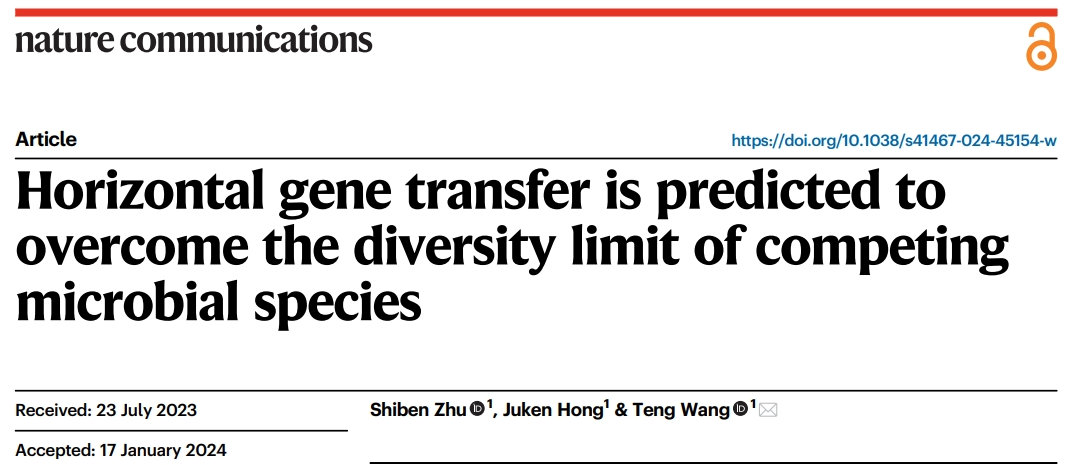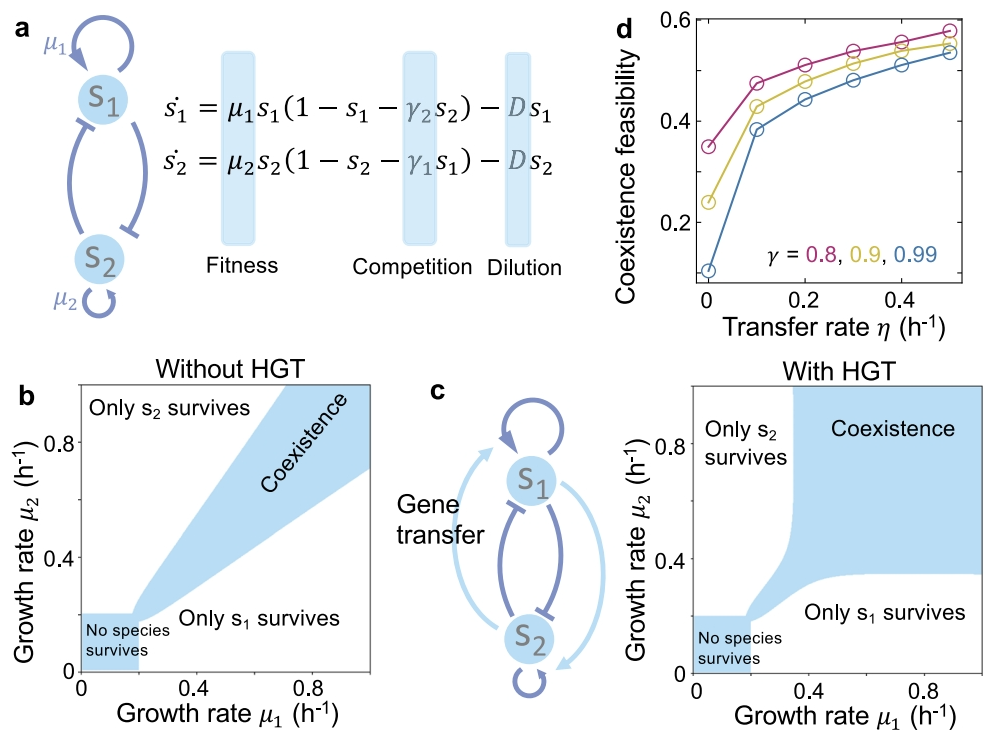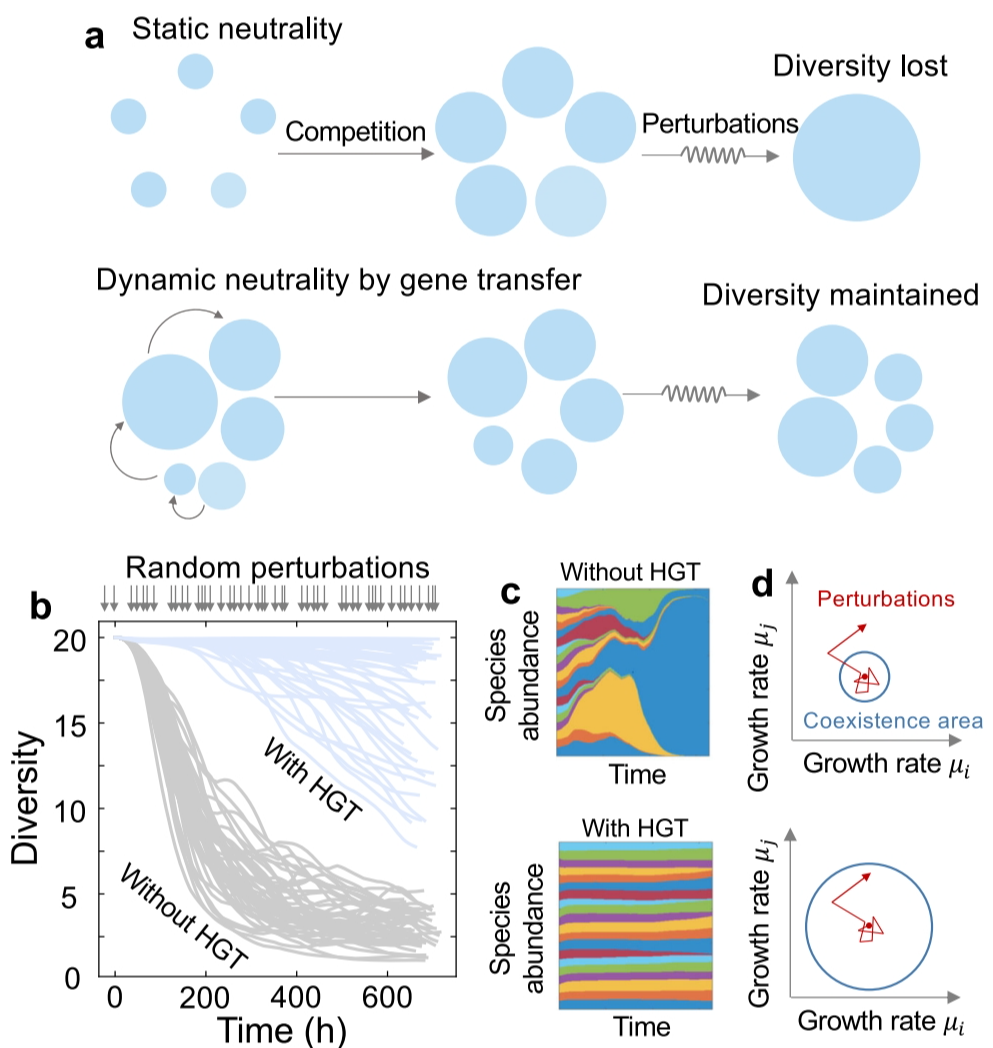
On January 27, 2024, the research team led by Wang Teng with Materials Synthetic Biology Research Center, Institute of Synthetic Biology, Shenzhen Institute of Advanced Technology, Chinese Academy of Sciences, published a research paper titled “Horizontal gene transfer is predicted to overcome the diversity limit of competing microbial species” in the journal Nature Communications, an international authoritative academic journal. This research has theoretically revealed that the widespread horizontal gene transfer in microbial communities can help overcome the diversity limit of competing microbial species and stabilize species diversity in communities under environmental perturbations.

Screenshot of the article
Link: https: / / www.nature.com/articles/s41467-024-45154-w
Living systems are generally subject to the basic law of “survival of the fittest”, while microbial ecosystems often have a large number of species that compete and coexist steadily with each other. How to explain this seemingly paradoxical phenomenon is a major tough task in microbial ecology. Understanding the mechanisms underlying the emergence and maintenance of species diversity in competing populations is critical for directed modification and rational design of complex microbial communities.
Based on the above background, the team first established a spatio-temporal dynamics model of species interaction and gene transfer in complex bacterial communities. Firstly, through the mathematical analysis of the two-species competition system, the analytical solution of the probability of species coexistence was inferred, revealing that the phase space for stable coexistence of species can be well expanded by increasing the gene transfer rate. Through randomization in the high-dimensional parameter space, the team further calculated the change curve for the coexistence probability of competing species with the number of species in complex communities. When there is no gene transfer, the probability of species coexistence quickly declines to 0, marking the “limit” of species diversity. Above this limit, the communities cannot maintain the stable coexistence of all species, and some species will be eliminated, restoring diversity to below this theoretical limit. Gene transfer can significantly slow the declining of species coexistence probability, allowing a large number of microbial communities to exist steadily above the “limit” as predicted by classical theory.

Figure 1 Horizontal gene transfer (HGT) expands the parameter space for the stable coexistence of dual-species competition systems
In addition, the team introduced environmental perturbations in the microflora model and simulated the changes in the diversity of complex microbial ecosystems with uncertain environments. Based on these findings, the team proposed a new concept of “dynamic neutrality” of microbial ecosystem: compared to the traditional “neutrality hypothesis”, dynamic gene transfer can provide an “effective buffer” for population structure under environmental perturbations. This concept was a useful complement to the theoretical edifice of microbial ecology, providing a theoretical basis for how to construct diverse microflora.

Figure 2 Gene transfer (HGT) provides a buffer for the population structure under environmental perturbations
Wang Teng, an associate researcher with Shenzhen Institute of Advanced Technology, Chinese Academy of Sciences, is the corresponding author of the article. Zhu Shiben, a research assistant of the team, is the first author, and Hong Jijin, a research assistant, is the second author. This research was supported by the Shenzhen Institute of Synthetic Biology.